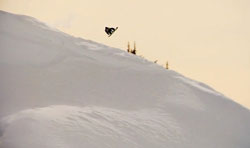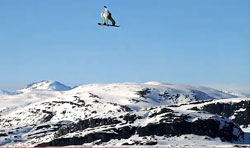Published in Whitelines Magazine Issue 96, March 2011

Last month if I remember right, we were talking about the incredible variation you get in snowboard bindings and how incredibly exciting it all is. This month, (you’ll be even more excited to know) I’m going to talk about boots. Ah, the joys of it! There’s so much to say…
WHAT ARE THE DIFFERENT BOOTTYPES? – Like with bindings, I like to divide boots into different categories depending on how their fastenings. Broadly speaking there are three different types.
Classic, lace-up boots are obviously the traditional type, but the modern lace-up boot is a far cry from what our snowboarding forefathers wore on their feet. Even as late as the mid-eighties, when riders already had proper bindings with highbacks, they were still rocking Sorel-style leatherwork boots on their feet. Making turns must’ve been about as easy as prising open a car door with a blade of grass! Still, it didn’t stop progression, and somehow early pros managed to push the development of tricks. Soon though, it became obvious that if they wanted to go bigger they’d need some support around the ankles to stop their legs snapping like matchsticks. And while some riders like the legendary Damian Sanders wore hard ski boots, others decided to push the development of a more flexible lace-up option. After a fair bit of trial and error (and no doubt a few shattered metatarsals) the board boot as we know it was born.
Boa boots were invented in 1998 by a dude with the unfortunate surname Hammerslag. While snowboard boot design had pretty much been standardised for a while, a lot of people were still unhappy with how long it took to do up laces, and how hard it was to get the fit precisely right every time. Gary Hammerslag’s twisting wheel with its wire-coiled laces might have been inspired by catheters (seriously!), but it soon caught on. These days many major boot makers, including Vans, Thirty Two, and K2 make some models featuring Boas.
Speed lacing systems of various kinds have come and gone over the years, as people got annoyed with having to lace up boots every morning. It’s fair to say some have been more successful than others. Two of the most popular these days are Burton’s Speed Zone system, and Salomon’s Powerlace system.
BOOT FEATURES – Apart from the different lacing systems, there are a whole host of other factors that will affect how your boots ride. Here are a few of the most important ones:
Flex – The materials your boots are made of will dictate their fl ex. In general stiffer boots are better for riding fast and aggressively. Using more rigid materials in the boot’s outer shell ensures that the movements of a rider’s calves and ankles are transferred more exactly, giving stiff boots a more responsive feel. This makes them popular with freeriders and shredders who like hitting big kickers at speed. In general softer boots are more forgiving, and tend to be cheaper, as they’re made of less expensive materials. They tend to be popular with beginners and jibbers who like to really tweak their tricks.
Liners – Most boots have a liner – or inner boot – that sits inside the stiffer outer. This allows you to have comfy, padded material directly in contact with your feet. Most companies now have heat-mouldable liners in their boots – ones that squash down to match the shape of your feet as you ride them.
Soles – Most boots feature rubber soles, but the fl ex may differ depending on the company. Some feature extras like metal studs to make gripping on ice easier, or air bubbles, like you’d find on a pair of running shoes. These help absorb the impact of heavy landings. Tongue and backstay – Usually the most rigid parts of the boot, the tongue and backstay offer the essential support needed to make toe and heelside turns.
WHAT KIND OF BOOTS SHOULD I CHOOSE? – Essentially the type of bootlacing system you choose is completely personal preference. You may find laces annoying to do up, or you may appreciate the increased flexibility they give with fastening options. Really, the most important thing is to check that the boots fit your feet and suit your riding style. Oh, and your budget.





